Winter Sowing: The Easiest Way to Start Seeds in Cold Weather
Winter sowing involves sowing the seeds outdoors in miniature greenhouses during the winter, allowing them to germinate naturally in spring.
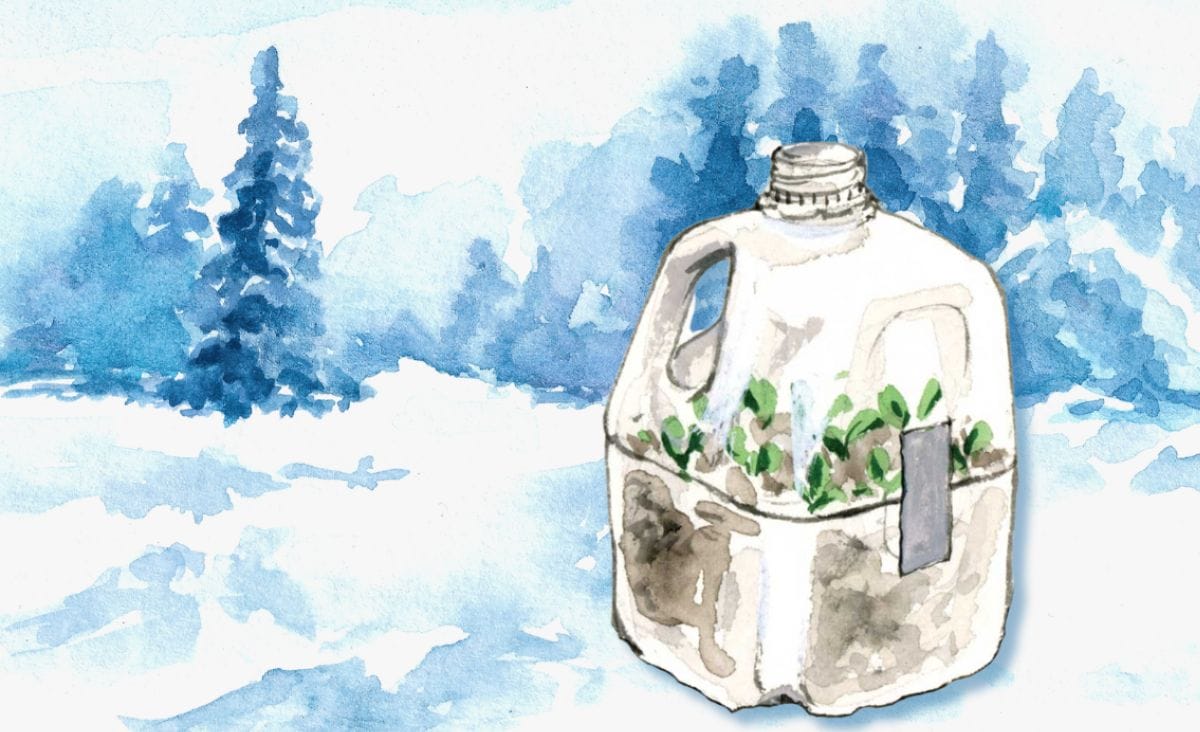
If you’ve ever struggled with starting seeds indoors—dealing with grow lights, watering schedules, and hardening off—you’re not alone. I used to think it was the only way until I discovered winter sowing. This simple, hands-off method lets nature do the work, giving you strong, resilient seedlings with far less hassle.
Winter sowing is a method of starting seeds outdoors in miniature greenhouses during the cold months, allowing them to germinate naturally in the spring. It’s perfect for gardeners in northern climates like Maine and works exceptionally well with hardy vegetables, herbs, and flowers. In this guide, I’ll walk you through the process, from choosing the best seeds for winter sowing to setting up your containers for success.
What is Winter Sowing?
Winter sowing is a low-maintenance way to start seeds outdoors using recycled plastic containers as mini-greenhouses. The seeds experience natural winter conditions—cold, snow, and fluctuating temperatures—which triggers dormancy and natural stratification for stronger seedlings come spring.
One of the best things about winter sowing? No hardening off. Since the seedlings germinate in outdoor conditions, they’re already adapted to temperature shifts and sunlight, eliminating the need to move them in and out each day like indoor-started plants.
My biggest seed-starting struggles were forgetting to water seedlings or hardening them off too late. With winter sowing, nature takes care of those steps for me!
How to Sow Seeds in Winter
Winter sowing is all about simplicity, but getting started requires a few basic supplies. The right container will act as a mini greenhouse, protecting your seeds through the cold months while allowing moisture and light to reach them. Let’s go over the best container options and how to prepare them for successful germination.
Choose Your Containers
You’ll need a clear or translucent plastic container that holds at least 3-4 inches of soil and allows light to pass through. Here are some great options:
- Milk jugs (my personal favorite)
- 2-liter soda bottles
- Large plastic take-out containers
- Pretzel or snack tubs
Why milk jugs? Their size makes them easy to arrange, and saving the caps lets you control moisture levels in the spring.
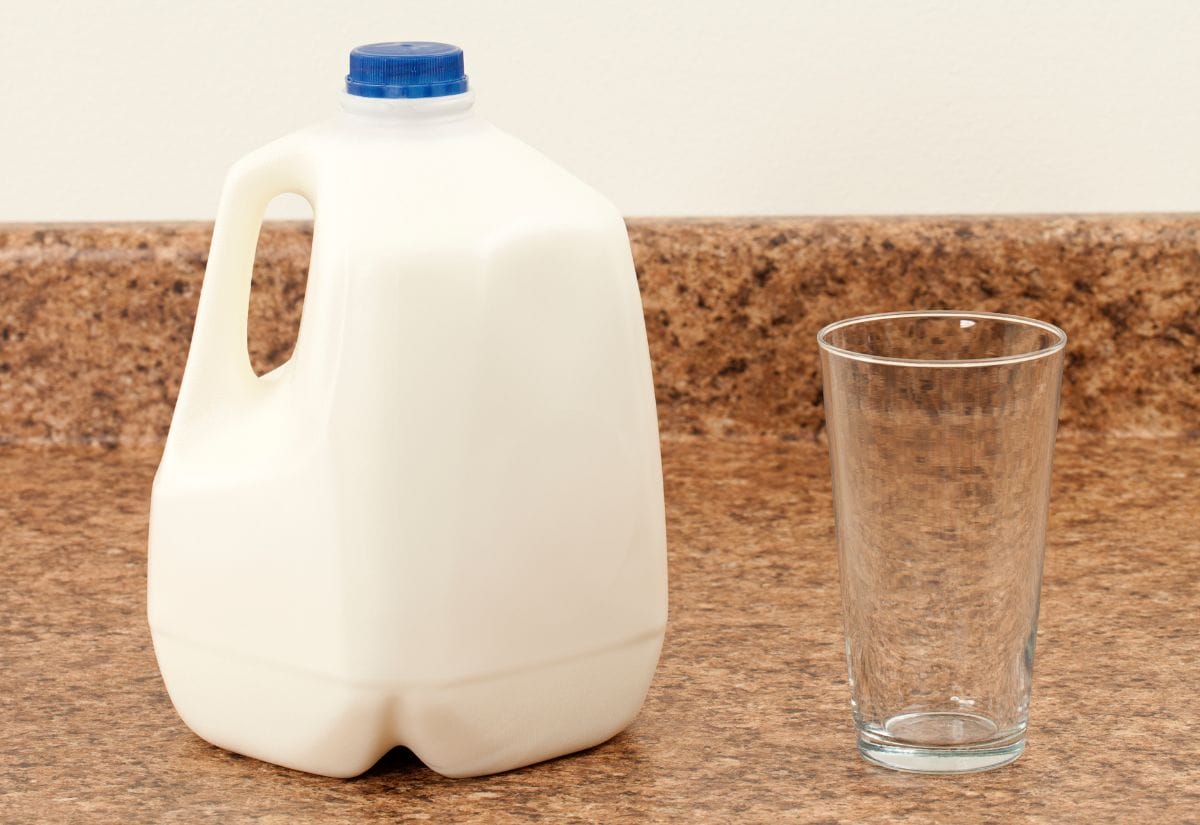
Preparing the Containers
Once you’ve chosen your containers, it’s time to get them ready for winter sowing. Proper preparation is key to ensuring your seeds get the right balance of moisture, airflow, and protection from the elements. The first step? Making sure excess water can drain out so your seedlings don’t drown.
Create Drainage Holes
Use a drill or knife to poke 3-4 holes in the bottom and sides (about ¼ to ½ inch up). This prevents water from pooling and causing rot. Pro tip: Freeze the container with water inside before drilling. It keeps the plastic from collapsing under pressure.
Cut a Hinged Lid
Using a sharp knife or utility blade, carefully cut around the container, leaving about an inch uncut to create a hinge. This hinge will allow you to easily open the container for planting, watering, and checking on your seedlings as they grow. Be sure to cut high enough to allow at least 3-4 inches of soil in the bottom portion while leaving enough room for seedlings to sprout and develop inside their mini greenhouse.
If using a thicker plastic container, score the cut line first to make slicing easier and ensure a clean, controlled cut.
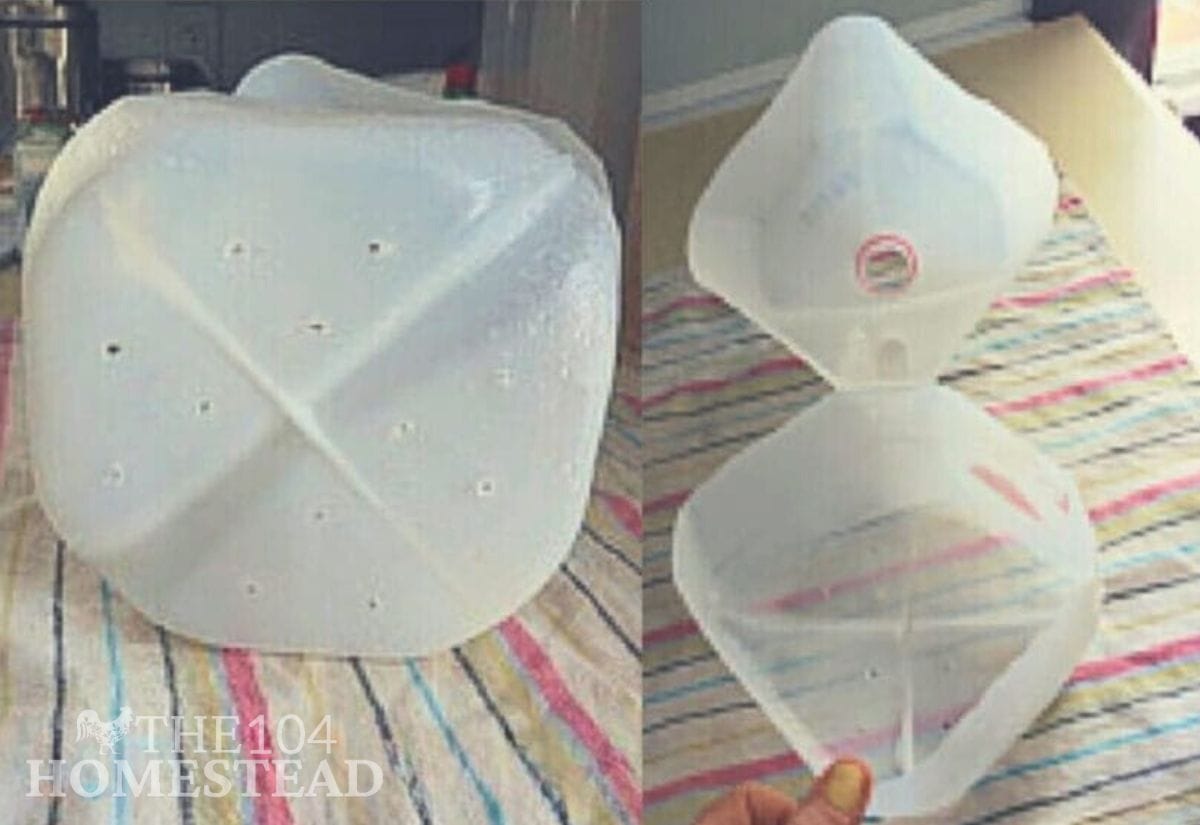
Planting in Your Milk Jug
Now that your mini greenhouse is ready, it’s time to plant! The key to successful winter sowing is creating the right environment inside the container—starting with properly prepared soil. Let’s go step by step to ensure your seeds have the best chance to germinate and thrive.
- Fill the container with moist potting soil about 3-4 inches deep.
- Sprinkle seeds according to the packet instructions for depth and spacing. (I tend to overseed a little, and it still works out fine.)
- Duct tape the lid closed and remove the cap (or poke holes in the top of the container) to allow rain and snow to enter.
- Label the container with a waterproof marker or plant tag to identify the seedlings in spring.
Placing Your Mini Greenhouses
Once your containers are ready, it’s time to put them outside. Here’s where to place them:
- Somewhere visible but protected from foot traffic. If you have kids who love building snowmen, you might want to mark the area!
- In an open area where they’ll get direct rain and sunlight. Avoid spots under eaves or trees.
- In a sunny location to warm up naturally in spring—this prevents having to move them later.
When to Start Your Seeds in Maine (5b)
This schedule works well for Zone 5 and colder regions, but you can adjust based on your local last frost date.
January
- Perennial Flowers
- Hardy Annual Flowers
- Brussels Sprouts
February
- Spinach
- Kale
- Peas
- Broccoli
- Thyme
- Sage
- Oregano
- Cilantro
March
- Lettuce
- Carrots
- Basil
- Parsley
- Bok Choy
- Beets
April
- Tomatoes
- Onions
- Peppers
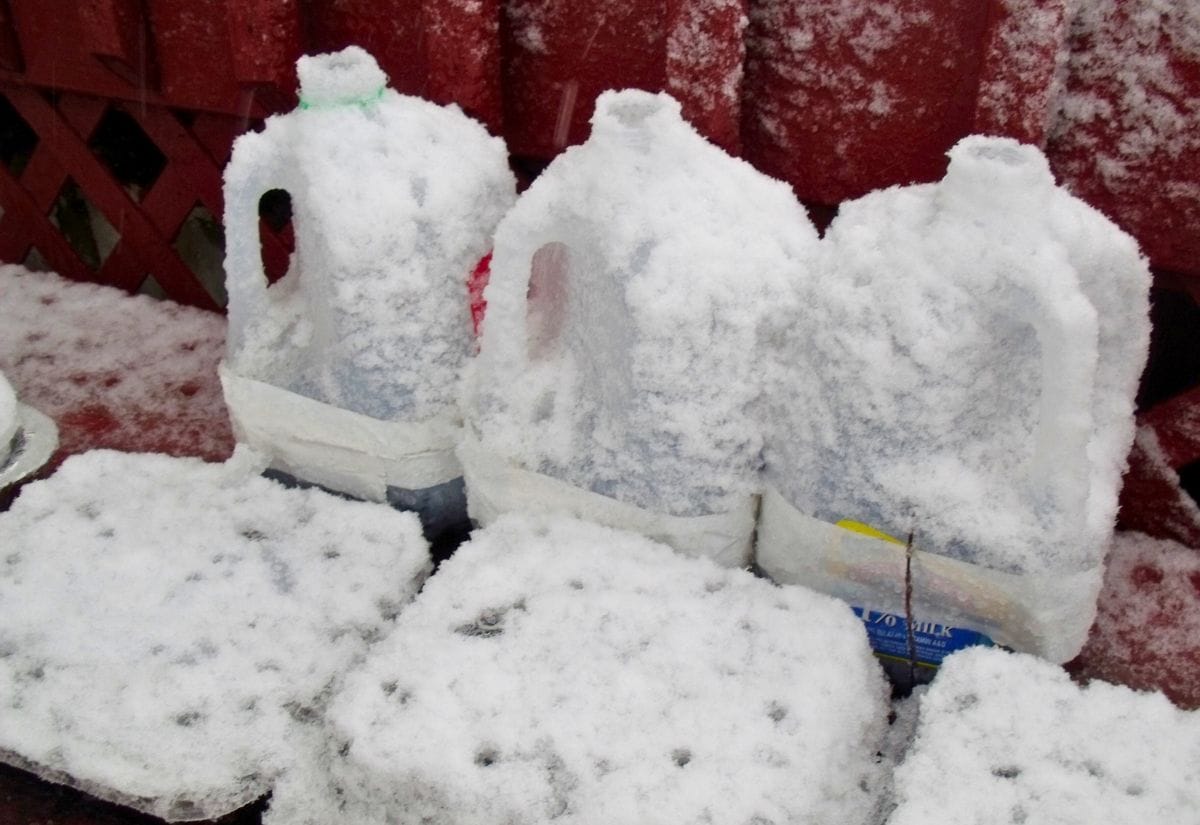
Need a different planting schedule? Find winter sowing dates for your growing zone here.
Common Questions About Winter Sowing
Recommended Reading
If you’re eager to dive deeper into winter sowing and year-round gardening, these books are excellent resources. Whether you’re a beginner looking for step-by-step guidance or an experienced gardener wanting to refine your techniques, you’ll find plenty of valuable insights in these expert-written guides.
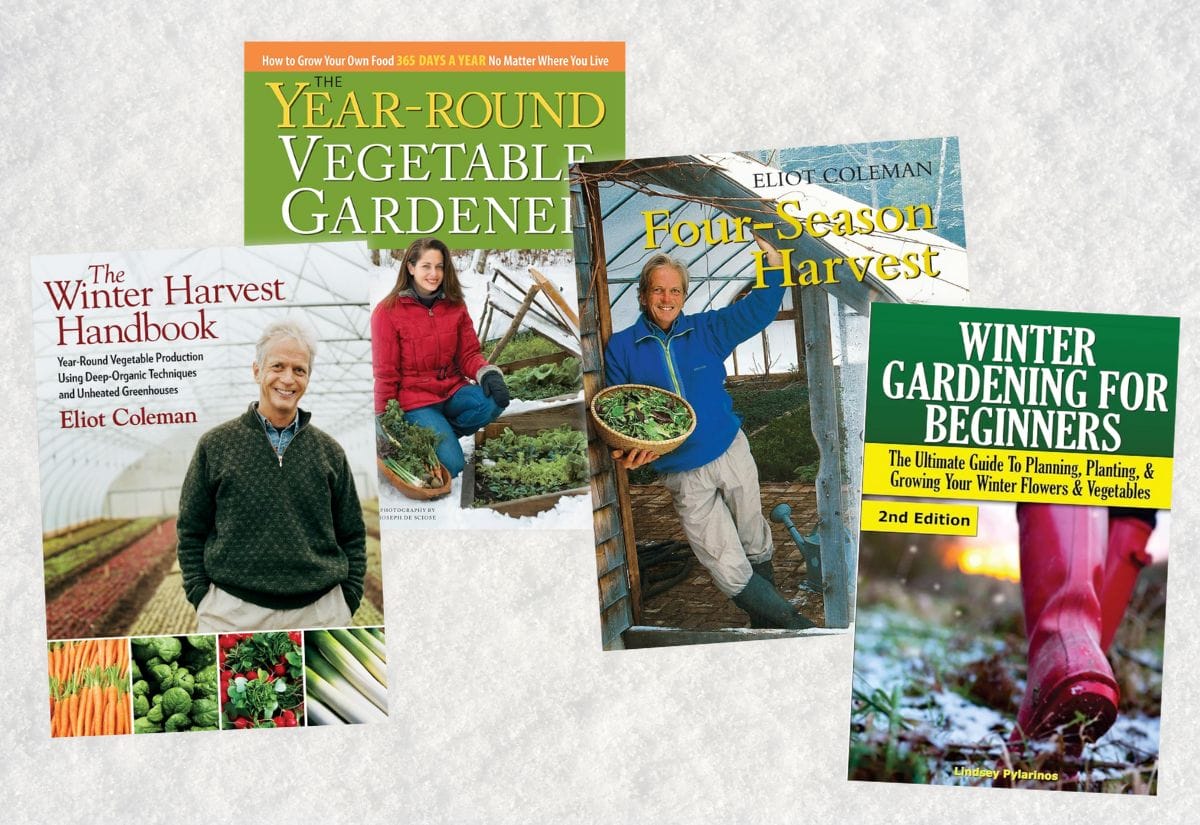
Winter Gardening for Beginners by Lindsey Pylarinos
If you’re new to winter gardening, this book is a great starting point. It simplifies cold-weather growing with easy-to-follow steps and covers topics like frost protection, choosing the right winter crops, and extending your harvest. I appreciate how beginner-friendly it is—perfect for anyone curious about gardening beyond the typical growing season.
The Winter Harvest Handbook by Eliot Coleman
Eliot Coleman is a pioneer in year-round vegetable production, and this book is a must-read if you want to take winter growing seriously. He shares practical techniques for cold frames, hoop houses, and unheated greenhouses—all of which can complement winter sowing. I love how he focuses on soil health and natural growing methods, making it an excellent resource for sustainable gardeners.
Four-Season Harvest by Eliot Coleman
A companion to The Winter Harvest Handbook, this book dives even deeper into season extension, root storage, and growing fresh food in colder months.
The Year-Round Vegetable Gardener by Niki Jabbour
This book is one of my favorites for practical, real-world advice on gardening in cold climates. Niki Jabbour shares detailed planting schedules, crop recommendations, and strategies for growing food in every season. What I love most is her accessible approach, making it easy to apply her tips whether you’re in a backyard garden or working with limited space.
Want stronger seedlings with less effort? Pin this guide!
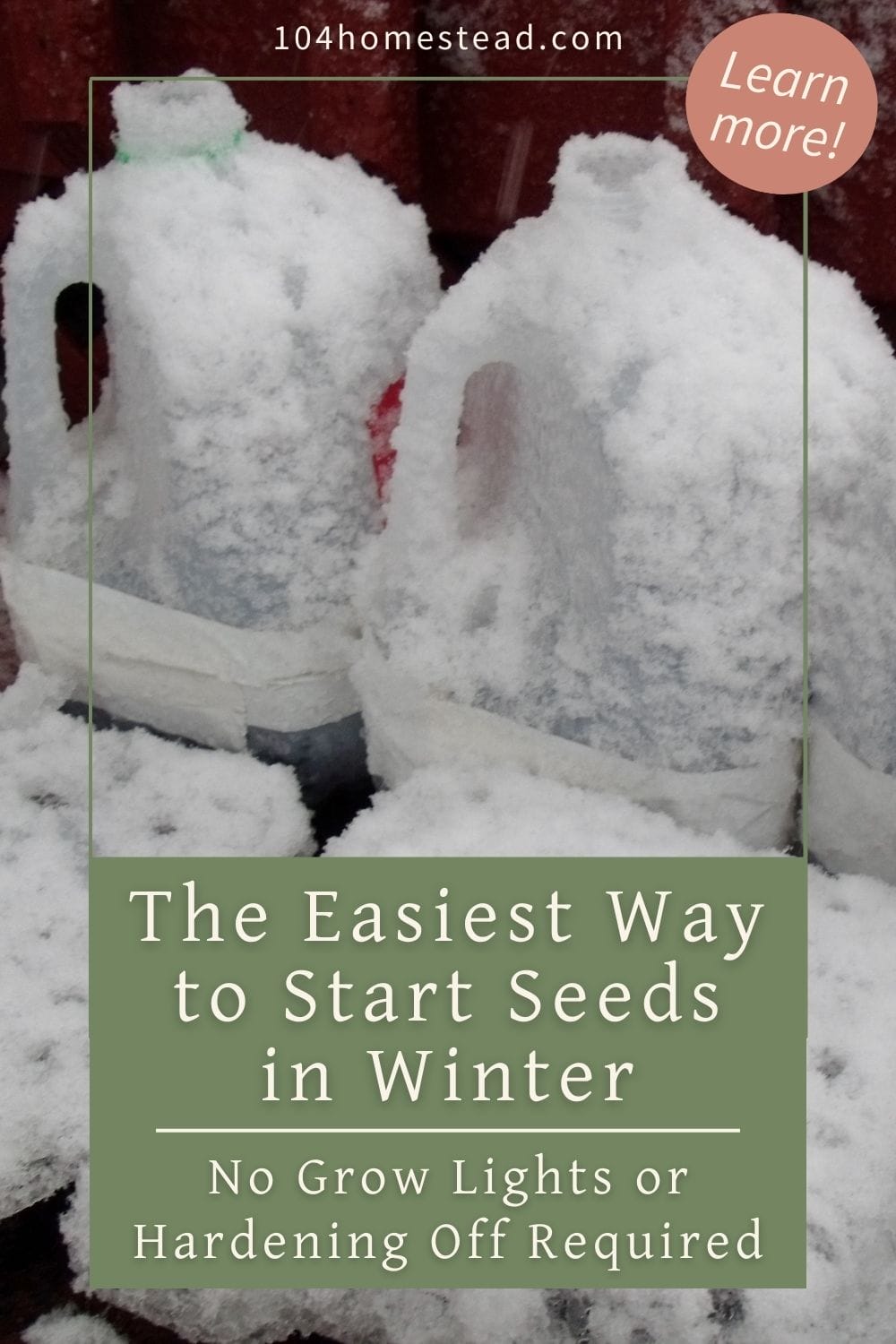
Winter sowing is one of the simplest, most hands-off ways to start seeds. There’s no grow light setup, no transplant shock, and no tedious hardening-off process. Just plant, place, and let nature handle the rest. So, what are you waiting for? Forget the countdown to your last frost date. Toss some seeds into a milk jug and let winter sowing do the work for you. Your spring garden will thank you.
Winter sowing is a simple way to start seeds, but timing and seed selection are key to success. Knowing your gardening zone and frost dates will help you determine the best planting schedule, while understanding how to read a seed packet ensures you’re choosing the right seeds for your climate. If you’re unsure which seeds will thrive in your area, a zone-based winter sowing guide can help you make informed choices. With the right approach, winter sowing can set your garden up for a productive season.
Have you tried winter sowing before? What plants have worked best for you? Drop your experience or questions in the comments below!
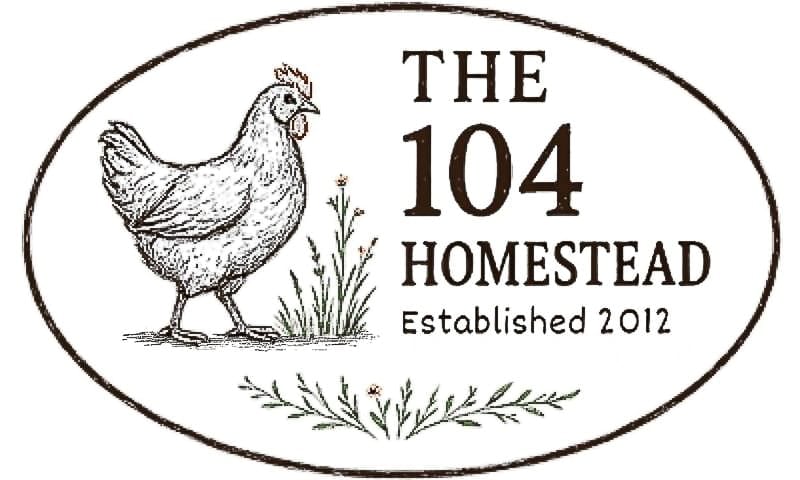




This is awesome!!! We are so very busy with two toddlers and this would eliminate so much stress for us. Two questions:
1) Can we put all seeds outside at the same time, even though the chart shows different months for different plants? I’m thinking it just means when they could possibly begin germinating, but not sure. (we are in northern NH, so possibly a different zone than yours!)
2) Can we do this with any seeds? We like a variety of veggies!
2)
Hi fellow New Englander!
1) You should be safe using the same schedule as I use, since we’re practically neighbors.
2) You can certainly experiment with different veggies and maybe even fruits. The ones I mentioned are the ones I’ve had success with myself.
i live in NW Georgia. Could I do this? And what and when could I start?
I’ve gotten a lot of questions regarding zone-specific guidelines. I am going to address all of that on Thursday, so be sure to check back.
Does the soil in the carton need to stay damp and be watered occasionally or do you just let it sit and get dry?
Until germination, you don’t need to worry to much. Once the seeds have begun to germinate, you may want to keep an eye on things to make sure they aren’t drying out. The neat thing about this system is that the container maintains a lot of moisture, like a greenhouse.
Make the hinged lid first and then drill through the bottom from the inside while container is sitting on a block of wood. Saves time and trouble with freezing the water.
Unfortunately, we don’t drink milk nor know anyone who does.
You could use juice containers, take out containers, or even try it with a clear plastic tote or container.
You can also use water bottles or soda bottles.
I live in NE South Dakota where we are freezing until the end of March, when do you suggest I start here? We don’t plant outside until the middle to the end of May. I really would like to try and plant my own plants but have never done it.
We usually start planting outdoors in the soil around Memorial Day weekend here in Maine. You probably are okay to use the same planting schedule as I do.
I love this idea! One question..we sometimes get really windy days here in Ohio in early spring. Have you had any issues with the containers blowing around? I am trying to envision how I might hold them down. BTW, I love Maine. Was stationed at Brunswick in the early 90’s and my oldest was born there 🙂
You might want to contain them in a plastic milk carton (you know those black heavy crates) if blowing away is an issue for you. I keep mine in a fairly sheltered area, so I haven’t had a problem.
Maine is pretty awesome. I moved away for 5 years, but I missed it and came back.
I will try this. Do you put the cap back on the jug? And what about watering?
I leave the cap off so that snow and rain can water the soil. Moisture isn’t really an issue until germination begins and the containers are pretty good at maintaining the moisture levels.
I live in central TX
I’ve gotten a lot of questions regarding zone-specific guidelines. I am going to address all of that on Thursday, so be sure to check back.
is it too late for me? im in northwest florida! like 45 minutes from the beach if that helps but near the alabama line
I’ve gotten a lot of questions regarding zone-specific guidelines. I am going to address all of that on Thursday, so be sure to check back.
In Florida you should be able to sow seeds outdoors all year without a greenhouse or any weather protection.
In the panhandle here, and this time table doesn’t work for us at all. For example, we can grow spinach, kale, chard all winter. Start tomatoes inside early February. Also radishes, peas, and a couple others can go directly in the ground now. Not sure how that translates with this process, but I hope that helps some.
This sounds really neat. I want to container plant tomatoes. Tried last year with store bought plants. Had lots of plant but very few tomatoes.I live in NE WA. Della
Excellent! I was looking for a planting project for my granddaughters, this fits the bill. Thank you so much.
You are so welcome Sandy. I hope the granddaughters enjoy it.
I am new with gardens. I live in Vt now so cold season last longer. Can I still use your planting list? Also how many plants in a milk container at a time? Thanks
If you are zone 5, you can follow the same schedule I use. As far as spacing, I follow the directions on the packet. For tiny seeds, I just sprinkle lightly. I’m pretty casual about these things 🙂
Wow, really, just put them outside? My mind is blown in my way of thinking, and here I just bought a grow light, argh, seriously two days ago! I have been saving milk jugs to use as a cloche to put over the plants once in the garden but wow! Do you do this will all your plants? Also I am in WI and am a 5 as well so this guide should be a great help, not sure 5a or b, does it make a huge difference?
There is only a small difference between 5a and 5b. In fact, until recently they didn’t do As and Bs in the zones.
I don’t do all my plants this way. I’m lucky enough to have a responsible mom with a fabulous greenhouse. I usually split flats of seedlings with her.
I was wondering if you can put the seeds in your raised bed and just put the tops of the milk containers over them?
If you live further south than me, it might work just fine. You might even want to lay straw around the carton to keep the soil warmer.
How many seeds do you start with?
I’ve gotten a lot of questions regarding zone-specific guidelines. I am going to address all of that on Thursday, so be sure to check back.
Can I start with any seeds or are there some that I should plant closer to spring? I live in Oregon I think zone 1?
Maybe I’m in zone 7…
iI you have a lot of jugs,tape them together, then the wind won’t get them. Walmart sells these plastic containers that fit under a bed. could you use them for winter planting? They sell. Them for putting sweaters away for summer. Under the bed.
I’ve gotten a lot of questions regarding zone-specific guidelines. I am going to address all of that on Thursday, so be sure to check back.
What about if I live in a place without a lot of snow?
Snow isn’t a requirement. It will work no matter where you live. If you tell me your zone I’ll hunt down some info specific to your area.
I’m zone 9-10. Our weather is so weird. 55° one day and 85° the next.
This is my first year trying this method. I’ve got 11 jugs out 🙂 I used a heated Philips head screwdriver to poke thru the bottom for drainage holes. I have one question; do you ‘pot up’ the seedlings or wait until they are large enough to set out directly?
I usually leave them right in the container until they are safe to put on the ground. Only a few times did they outgrow the container before it was safe to plant (tall flowers and such) and I just moved them into a clear tote set up the same way.
do u leave the cap on or off
I leave the cap off to allow rain and snow to water the soil.
Why don’t you just drill all your holes from the inside once you cut the jug open? That seems to me to be much easier than waiting for water to freeze…
You certainly could do that, but I found the fragile plastic shape still collapses, even from the inside.
If you drill through the jug from the inside and into something like a piece of wood for support it should work. Great idea for winter sowing. Thank you.
I was thinking about hinging it first too; only I thought that a scrap of wood (or drilling ‘table’) under it and drilling from the inside out into the drilling scrap wood. That would stop the milk jug caving in and not having to to wait for it to freeze. Freezing is not an option for me as I don’t have the extra freezer space.
Yeah, freezing was no inconvenience here since I can just put them out on the deck and they freeze within an hour.
Just use a soldering gun to make your holes. Works great!
i take a metal BBQ skewer ( like for kabobs) and heat that on the stove it punches the holes much easier..I also heat a knife to cut them.
a little heat saves alot of work
What zone is the guide for. In Virginia I would already have tomatos seedlings by April. Typically we get our last frost at Easter.
It appears she’s somewhere between Zones 3-5. I’m also in VA, Zone 7A/B. We could probably start some of her later things now.
Yes, sorry. I went back and added that I am in zone 5. I’ve gotten a lot of questions regarding zone-specific guidelines. I am going to address all of that on Thursday, so be sure to check back.
At some point, after it warms up enough, do you pull them out of the milk carton and put them in the ground?
Yup. You can transplant them in the ground when you normally would without worrying about hardening off. If you’ve got some extra milk cartons laying about, they make great cloches in the event of an unexpected spring frost.
I live in the Northeast and it snows a lot. If these get burried in the snow is that ok?
Absolutely! I live in Maine and most years mine are buried under 3’+ of snow (this year is an exception). The neat thing about winter sowing is that the seeds take their cues from nature. As the snow thaws, it waters the soil in the carton. As the temperatures rise, the seeds begin to germinate. It removes human error from the equation.
Seriously brilliant! I have never had any luck with starting seeds indoors either.
~ Christine
Sounds like a great idea, I’m thinking of trying this. I do have a couple of questions; will the seed
Hi Norma! It seems your whole comment didn’t post. If you see this, feel free to pepper me with questions. I’m happy to help.
Do I plant all the types of seeds in one month, or different types for each month? Hope I made sense.
This might help. It’s a month-by-month guide for the various zones. https://104homestead.com/winter-sowing-by-zone/
I can’t wait to try this Jess! I have so little gardening experience but really want to try to maximize the growing season without an enormous cost. Thank you! Sharing on facebook and pinterest!
It really works out great and I find that my spring is less stressful when my plants are winter sowed. Thanks for sharing with your friends and fans!